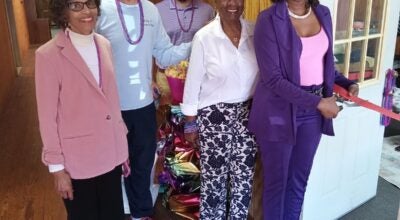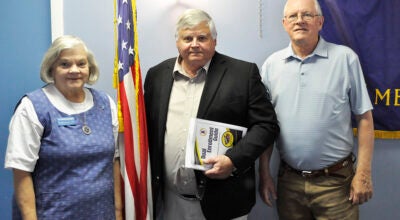Show and Tell event focuses on Indian artifacts
Published 11:00 pm Monday, March 25, 2013
Hunting arrowheads was once a favorite pastime of children in rural Pike County.
Plowed fields were the prime hunting grounds but Indian artifacts could just as easily turn up during the building of sandcastles or the planting of grandma’s lilac bush.
On Saturday, grown up children brought their collections of Indian artifacts in pasteboard boxes, cloth sacks and framed display cases to the Artifact Show/Tell at studio 116 in downtown Brundidge. They came wanting to learn more about their artifacts and the culture surrounding them.
Archeologist Jason Mann presented a program that focused on the tribal groups that lived in Pike County and explained the relationship between the Creek Indians who inhabited the Walnut Creek area and those who inhabited the Etowah Mounds in North Georgia.
Mann said that the six, pyramid-shaped Etowah Mounds were built between 950 A.D. and 1450 A.D.
“The Etowah Mounds society was wealthy and huge, with a population between 10,000 and 15,000,” he said. “However, there is a mystery surrounding the Etowah Mounds. Around 1500 A.D., that society disappeared. The area was burned like it had been attacked. What actually happened is a mystery.”
However, when archeological digs began around the Walnut Creek area, artifacts were found that linked the Muskogeean-speaking Creek Indians with those at Etowah.
“There could have been a political conflict at Etowah and the Indians could have fled and come to Troy,” Mann said.
“But, much of the Native American history of the Walnut Creek area has been lost to modern development.”
He said many Indian artifacts have been found in the area of Hobdy’s Bridge, that spans the Pea River between Pike and Barbour counties. Hobdy’s Bridge is the site of the last battle of the Creek War of 1836 and is also the site of the last official causality of the Civil War.
Because artifacts are important in preserving the history of a region and its people, Mann said it is important for artifacts to be protected.
Those who hunt for artifacts should have the permission of a landowner before hunting his or her property.
“A site is 100 percent the property of the owner,” Mann said. “To remove artifacts from someone else’s property is stealing. Ownership is cloudy when it comes to hunting rivers. But it all comes down to property ownership.”
Mann said when locating an artifact, it is important to keep a record of where the artifact was found and when. That information could be important in relationship to other finds and future finds.
Mann was asked about the possibility of disturbing burial grounds while hunting artifacts. He said that most Alabama Indians buried their family members beneath the floor of their houses in order to keep them nearby. So, it’s not likely that a burial ground would be disturbed.
Mann brought artifacts that were found in the Pike County area to show and tell. The collection included arrowheads, spear points, ax heads and pottery shards.
He identified and dated artifacts that were brought to the Show/Tell event.
Most were arrowheads and pottery shards. However, one collector brought a large pottery shard that was thought to be from an Indian corn pot. However, Mann said the pottery was actually an import probably from Greece that dates back to the 1800s. He identified it as from an olive jug.
Chris Rich, studio 116 owner, said turnout for the Artifacts Show/Tell was extremely good.
“It was well attended and that’s an indication that people are interested in local history, he said. “We’ll plan more events that focus on the history of Pike County and its people.”





